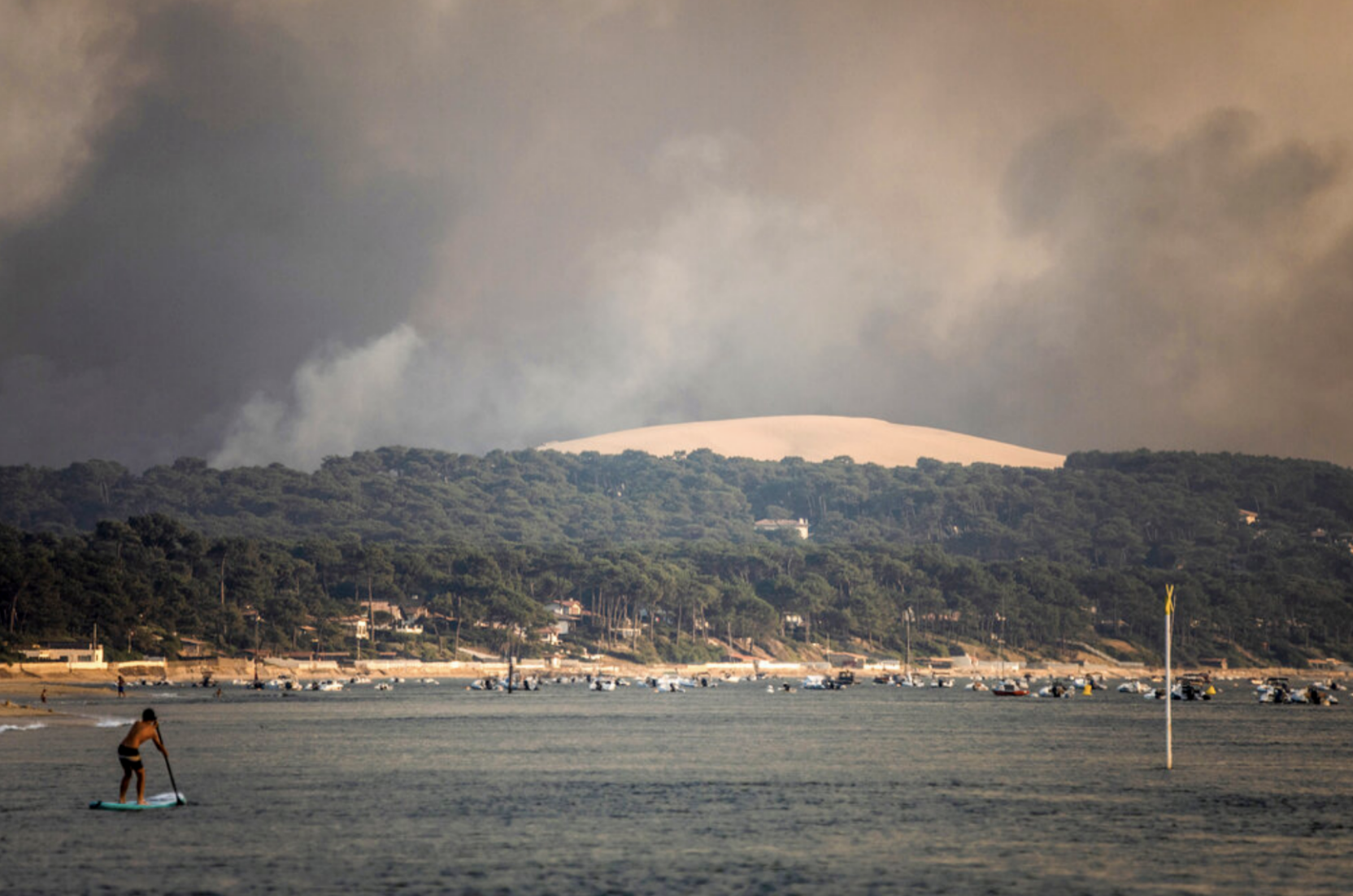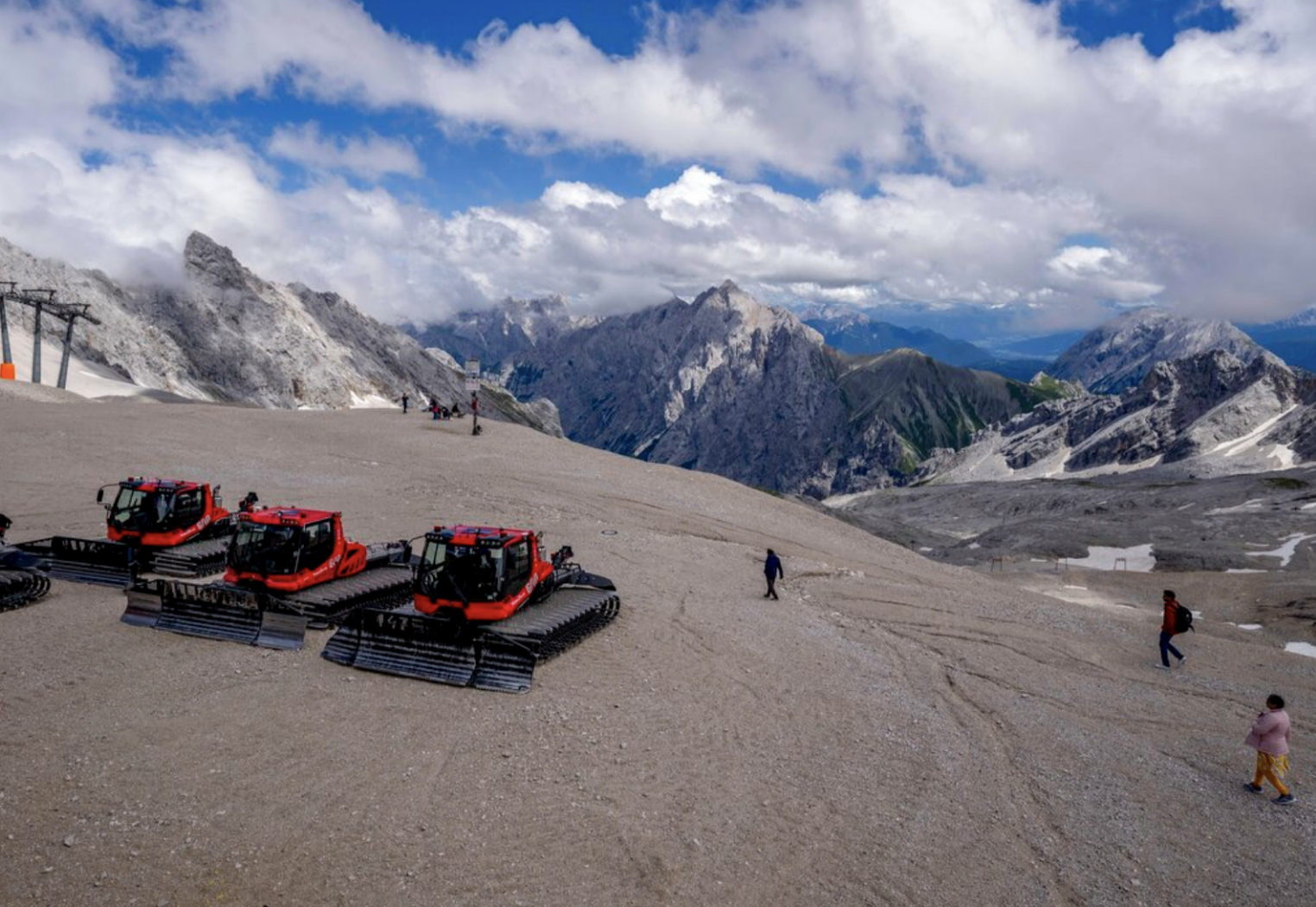Reports of Global Warming in Europe Quicker than Global Average
Wildfires seen in the distance of the southwestern region of France this summer. Photo: AP Newsroom / Sophie Garcia
Following an unusually hot summer in Europe this year, new reports show that the region is warming at twice the global average. Glaciers in European Alps are particularly alarming evidence of a region shifting geographically in the face of climate change.
In the past year, 6percent of Swiss glaciers have melted, a stark jump in ice loss compared to past years. This summer, all ice melted between the Tsanfleuron pass, revealing bare ground for the first time in the past few thousand years. The retreat of these glaciers is alarming in terms of global warming, but also intriguing in what it reveals to us about the past. Artifacts preserved in the ice date back thousands of years, revealing old leather goods, skis, and even human bodies preserved so well they appear to be modern day specimens.
Snowcats on top of Zugspitze, a mountain revoked of its glacier status following extreme summer heat. Photo: AP Newsroom / Michael Probst
The increasing warming of Europe in the past year reveals to us how even the most prepared societies are still not exempt from the severe impacts of climate change. In countries that record fatalities attributed to excess heat such as Spain and Portugal, excess deaths were recorded in this summer’s extreme heat wave, including 2,700 in the week of July 11 in Spain. In countries such as Germany, which do not record excess deaths directly attributed to extreme heat, it is harder to quantify the scope of fatalities linked to heat waves.
This week, the European Commission published a report detailing the severity of last year’s forest fires in Europe, the Middle East, and North Africa region. The year 2021 was the second worst fire season on record, though 2022 is shaping up to be even worse with the amount of forest burned in October alone, setting records in nine EU countries. As Europe continues to warm at an alarming rate, these fires are setting the stage for what will continue to be increasingly devastating fires across the region.
Despite increased warming in Europe, we are seeing even more devastating impacts across the globe. In Pakistan, this summer’s monsoon season left millions homeless and farmlands underwater, a catastrophe likely to only worsen in upcoming years. China had the worst drought in recorded history, reducing hydropower output and resorting to coal for energy, creating a feedback loop that serves only to worsen the climate crisis in the long run. While Europe may be warming faster, they contain the infrastructure, for now, to withhold some of the devastating effects of the climate crisis currently being borne by other countries.


